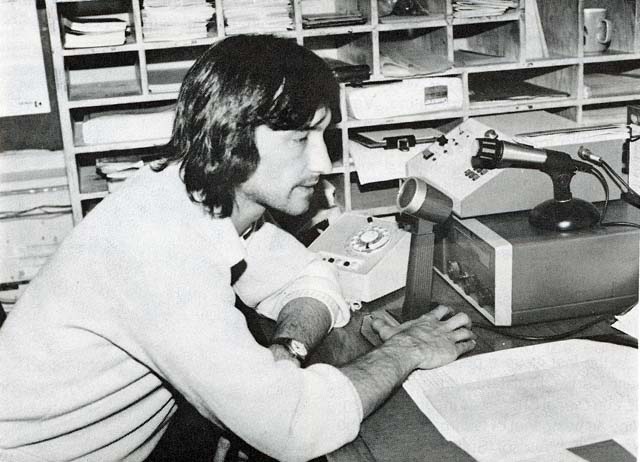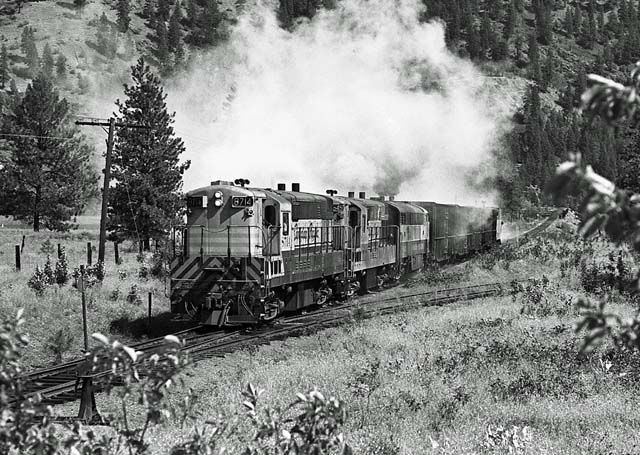
1982-1984


Trail B.C. - From the glass-enclosed observation room, Yardmaster Bill King can watch railcars of coke from the coal mines near Sparwood moving into the rail yard at Cominco's smelter here.
"We transport the raw product in and the refined product out, that's about the best way to describe it," says Bill. Cominco uses about 3,000 tons (272 metric tons) of concentrate coke and coal daily along with other supplies such as fuel, oil, natural gas, and phosphate rock.
Dennis Evans, CP Rail terminal supervisor, says that more than 42,000 rail cars a year move in and out of the yard here.
"We ship the refined products like lead, zinc, and fertilizer to markets. As well, there's the odd transport of silver to eastern Canada for use in the photography industry," he says.
Cominco is the largest lead-zinc smelter in the world and was originally built here in 1895 to treat gold-copper ore from the Rossland mines.
BIG CUSTOMER

The smelter was purchased in 1898 by Canadian Pacific as part of its acquisition of the Columbia & Western Railway, and is 54 percent owned by Canadian Pacific Enterprises Ltd.
Cominco is one of the railway's largest single customers in the West Kootenays, the nearby Sullivan Mine at Kimberley transports much of its lead and zinc concentrate to Trail for refining. Both the raw concentrate and refined products account for a significant portion of the railway's traffic in the Kootenays.
In addition, Kimberley supplies the quality ballast used by Pacific Region. Rock and overburden, normally termed waste rock at most mining operations, are crushed, loaded into railcars, and transported throughout the region for the summer works programs.
On this particular day, the shipment out of the smelter is a load of lead, zinc, and fertilizer. Locomotive Engineer Bill Bidinoff is quite proud of the shiny new locomotive, Number 6036, that he will be running tonight.
"We just got this one, it has the date it was made on the side, 31 Jan 1983," he says. "The consist is 82 railcars that are going to Nelson."
Bill's Number 6036 is one of 30 new 3,000 horsepower SD40-2 mainline locomotives recently purchased for use in Western Canada.
Powerful locomotives are necessary in this region of Canada. Trail falls within the Rossland subdivision and some of the toughest grades within the Kootenay Division.
From Cominco's Warfield plant, there is a three mile (4.8 kilometre) 4.29 percent grade with a curvature in the track up to 20 degrees. Four GP-9 locomotives are required to move a mere eight loaded railcars up the climb.
